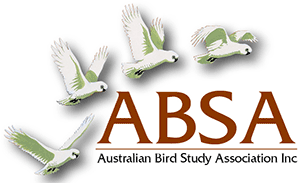The season, frequency, parental care and success of breeding Black-necked Storks Ephippiorhynchus asiaticus australis in northern New South Wales
| Posted: |
25/03/2021 |
| Author(s): |
Greg Clancy, Hugh Ford |
The Black-necked Stork Ephippiorhynchus asiaticus is a large waterbird native to Australasia whose breeding biology
is poorly known. They are known to breed as solitary pairs within large home ranges making detailed breeding studies
diffi cult. We investigate the breeding biology of eleven regularly monitored pairs over a four-year period (2003–2006)
in northern New South Wales. They were found to breed from May to January, with incubation from May to October,
nestlings from July to January and fl edging from September onwards. Individual pairs bred approximately twice over
the four-year period. There was no tendency for successful years to be followed by a non-breeding year and pairs were
capable of rearing young in successive years. Both parents shared nesting duties, with males spending more time than
females brooding the nestlings (68%).The fi rst three years had average or below average rainfall, but 2006 had good rain
in summer and autumn. More Storks bred in that year and produced more fl edglings per active nest (1.7) than in the
previous three years (mean of 1.3 fl edglings/active nest). Juveniles remained with their parents for at least two months,
though they started foraging by themselves soon after leaving the nest. One young bird was found dead 400 kilometres
NNE of its nest, within four months of fl edging. The production of at least 64 young in four years suggests that the
recruitment rate is likely to be adequate to maintain the state’s population of this presumably long-lived species.
>> Download Abstract |
File Size: 108KB
>> Download Complete PDF | File Size: 2M
